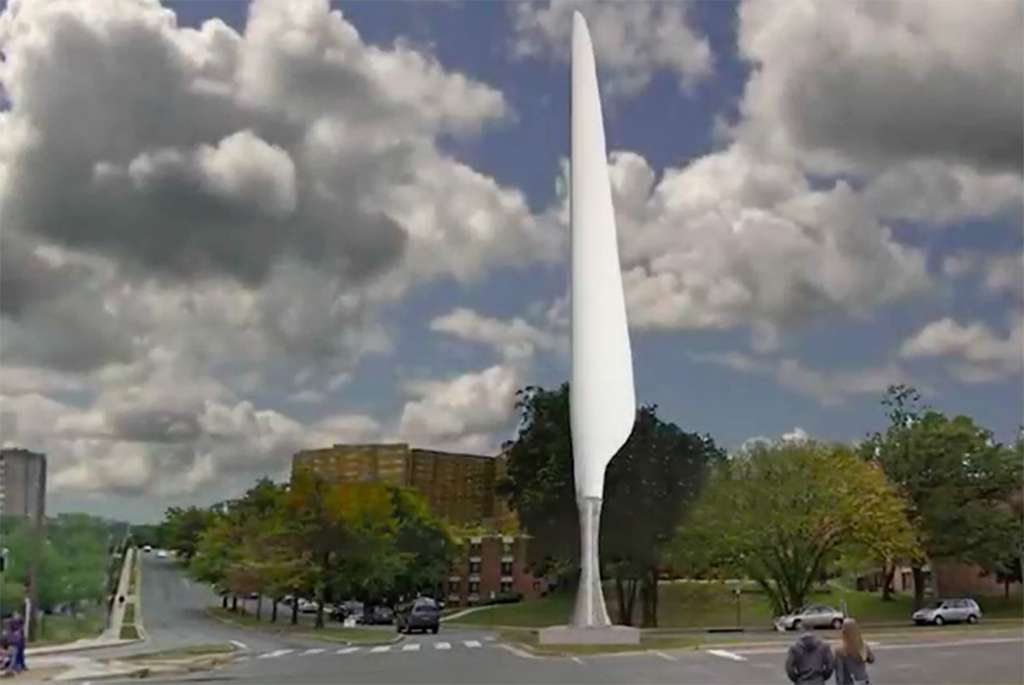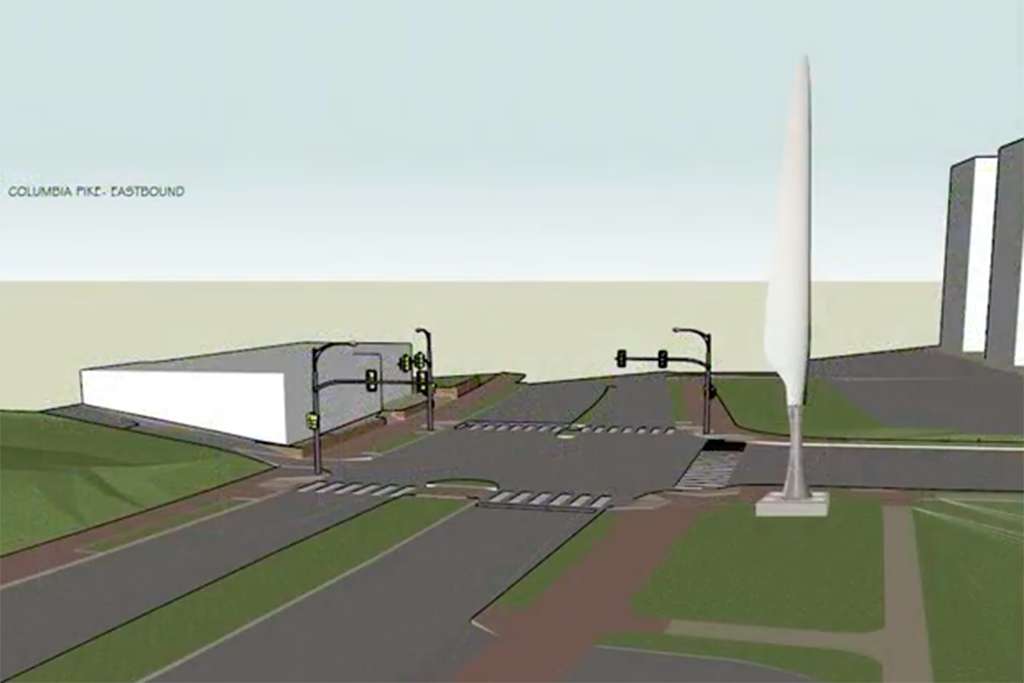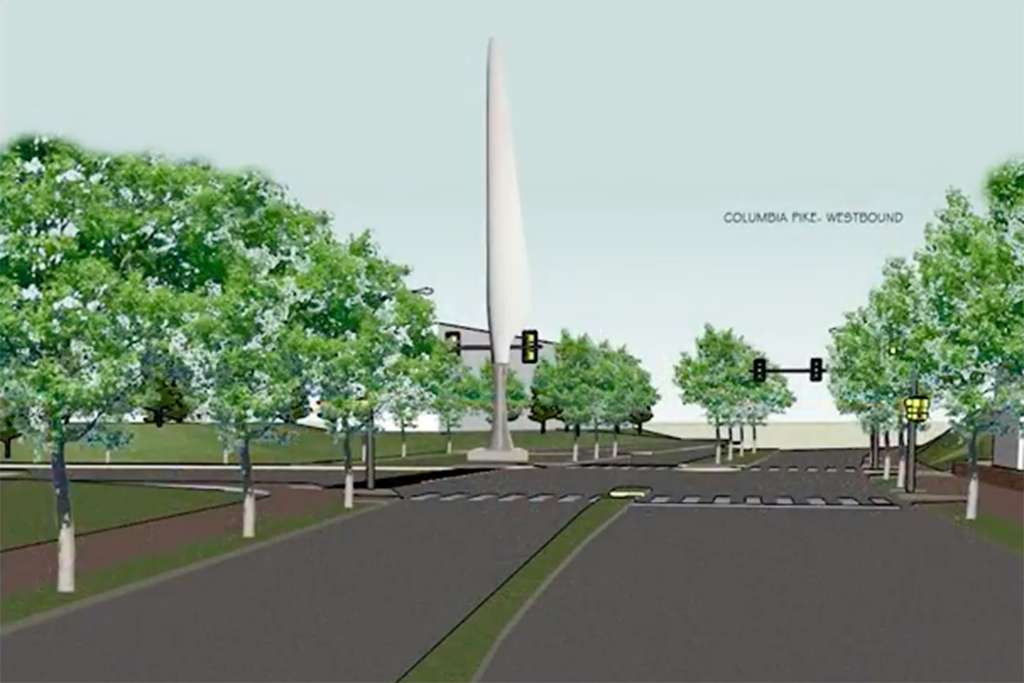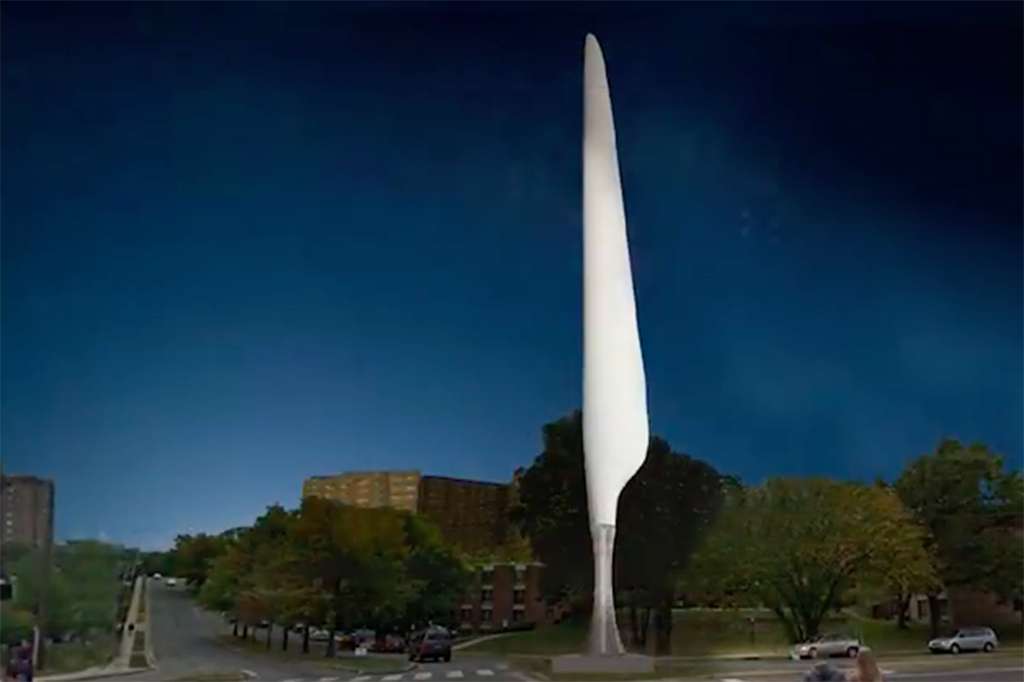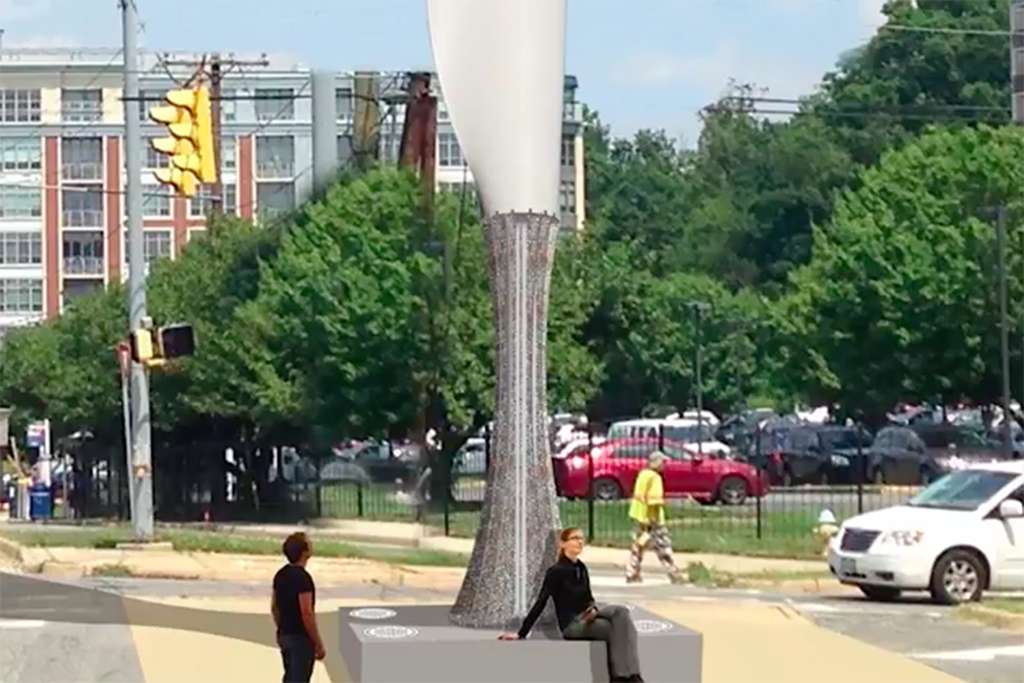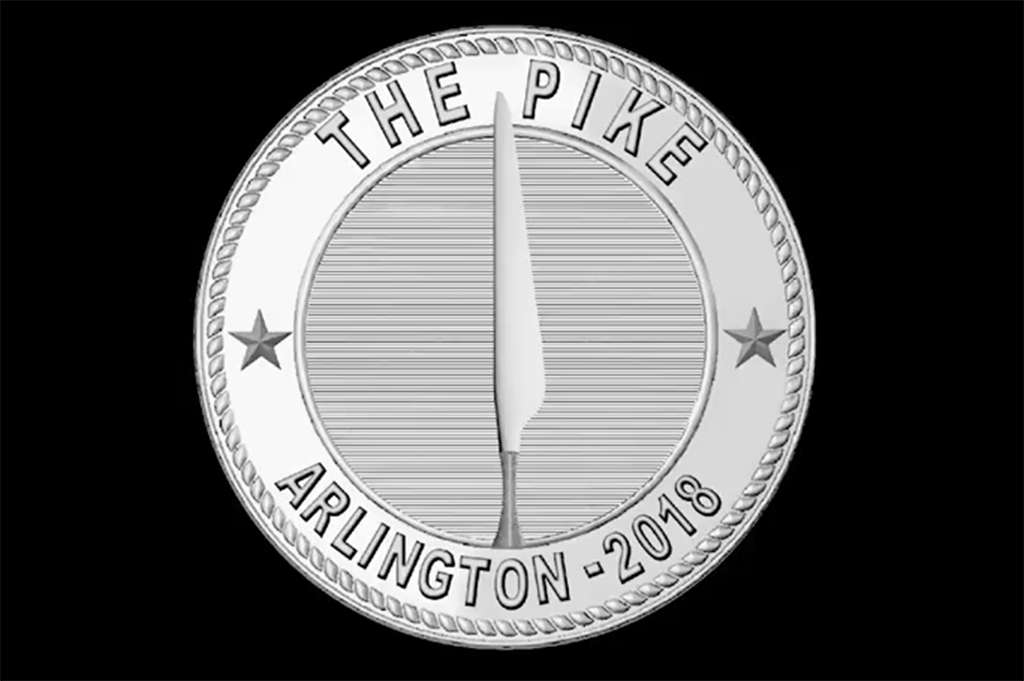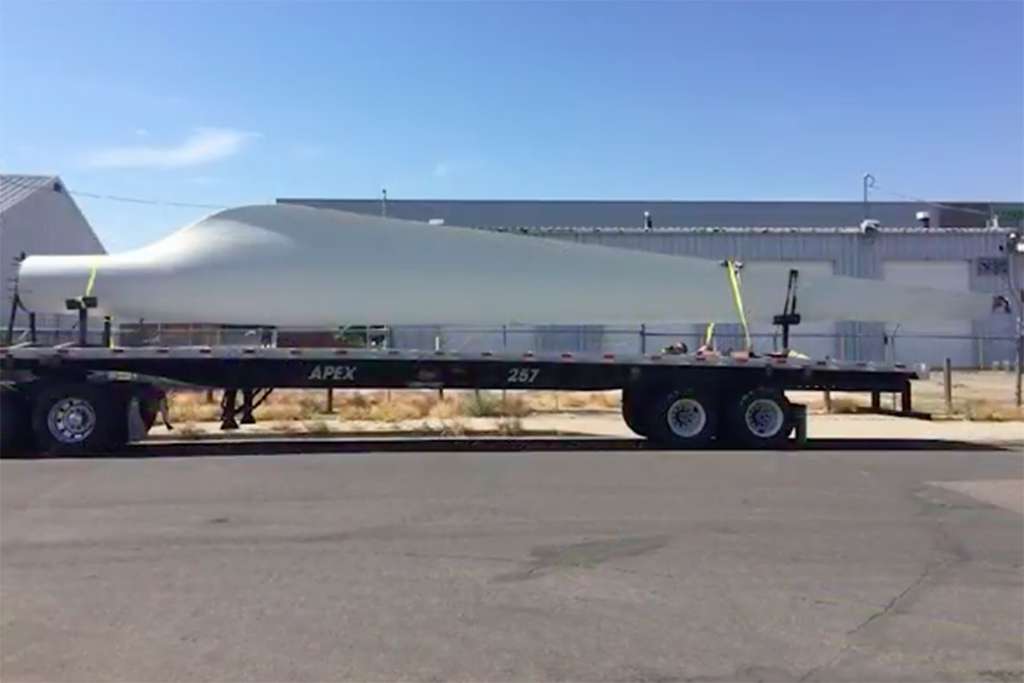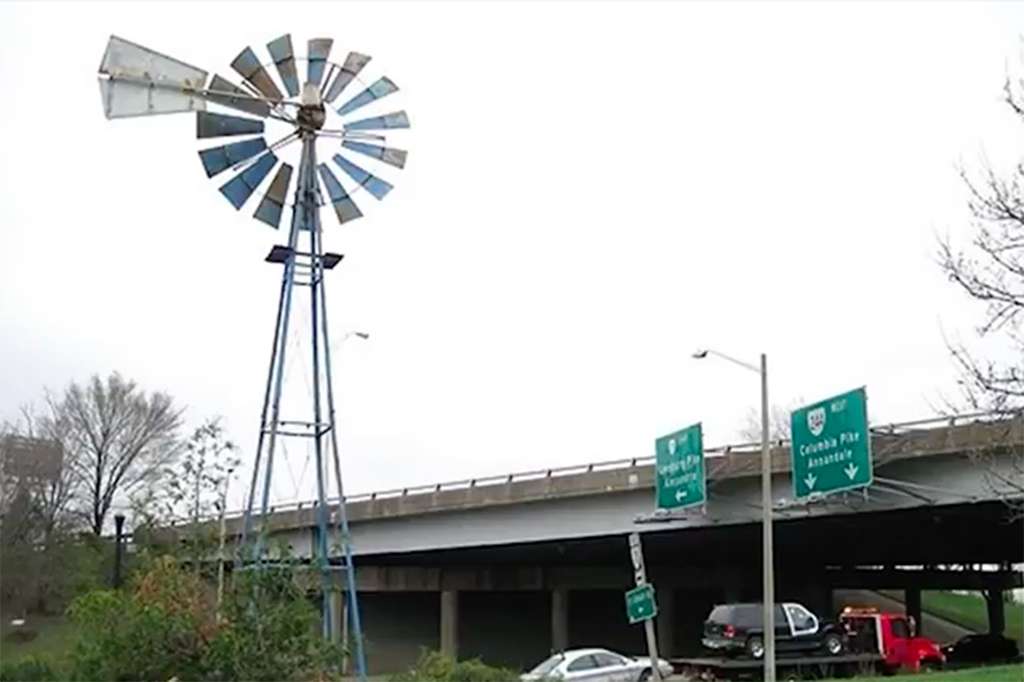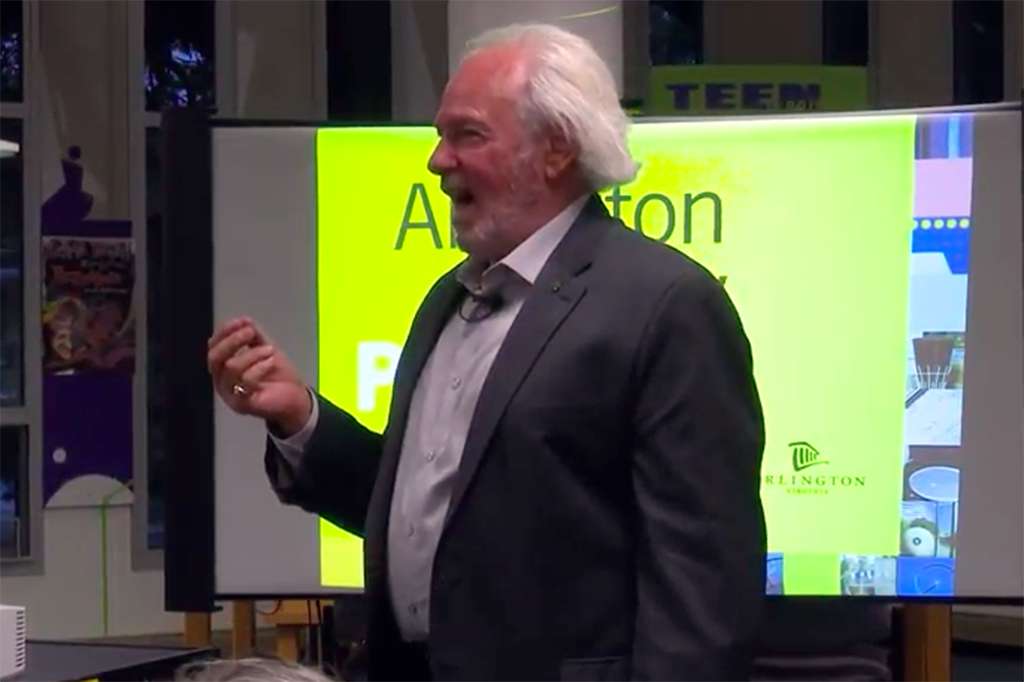Columbia Pike is set for a new piece of public art: a 60-foot wind turbine blade on Arlington County’s western border with Fairfax County.
The blade, entitled “The Pike,” is designed by the noted sculptor Donald Lipski, and will stand on the southern side of the intersection of Columbia Pike and S. Jefferson Street in the Arlington Mill neighborhood.
At a talk at the Columbia Pike Branch Library last month, Lipski said he was inspired by the design of wind turbine blades and the pike weapon, which is a long thrusting spear. He also noted that there are still disused windmills along Columbia Pike that were once used to pump water.
“It’s just put up as this big beautiful thing,” Lipski said. “It’s a found object, it’s recycled, it’s emblematic of wind energy, it’s emblematic of a Pike, but one that’s vertical, one that’s in the open position and says, ‘Come on in. Everybody is welcome. You don’t have to pay a toll even though it used to be a Pike'”
Lipski said he will reuse an old 50-foot-long turbine blade, stand it up vertically on a 10-foot pedestal and then cover the pedestal in coins from the various countries and nationalities represented along the Pike. The sculpture will be lit at night by a series of lights around its base.
The use of coins also harks back to when the Pike used to be a toll road, first designed to connect the District of Columbia with areas to the west.
“Citizens of Arlington would go and rummage around in their drawers and find coins from their home country and give me those coins, and I would build them into the sculpture,” Lipski said.
And in return for letting him use their coins in his sculpture, Lipski said he will design a commemorative coin and give one to each person who donates in exchange.
The work had been intended to coincide with the opening of the since-canceled streetcar, but will go ahead as the Pike prepares for the launch of the “Premium Transit Network” of buses.
But not everyone is so sure about the new piece of art. In letters provided to ARLnow, leaders at the Arlington Mill Civic Association said a decision approving the project was made without enough input. Planning for the art has been underway since 2012, and Lipski was selected from 88 applicants the following year.
“Remember, Lilly [Mancilla, the neighborhood’s representative on the county’s Art Advisory panel] specifically requested — and assurances had been made — that we would have input in this design process so that our neighborhood would have a piece of sculpture that pleases us,” association president Kay Langenbeck wrote in a letter to County Manager Mark Schwartz on September 18. “So you can imagine our surprise when, late in 2016, someone shared a rendering of this sculpture and told us the county had moved ahead without us.”
In response, Michelle Isabelle-Stark, the county’s Cultural Affairs Division Chief, said the project selection “followed County Board policy and County Manager approved guidelines for project development.” Isabelle-Stark said panels were convened to discuss the project in 2012 and “were fully inclusive and representative of the diversity of the residents of Columbia Pike and its Civic Associations.”
Some also objected to the design of the sculpture, in particular the use of a turbine blade, in a June letter to Angela Adams, the county’s director of public art.
“Recognizing Arlington Mill is the county’s most impoverished neighborhood, we firmly object to the implementation of any form of blade as representative of our community,” former association president Ric Birch and Douglas Park Civic Association president Adam Henderson wrote. “Further, turnpike gates are never welcoming. Their purpose and design is to stop traffic. They disrupt the flow. Surely this is not how Arlington County’s Southwestern Gateway should be depicted.”
The pair also said in the same letter that the art’s location at a heavily-trafficked intersection means further contemplation on the meaning of the sculpture by those passing by is unlikely.
“Regardless of the merits of the symbolism embedded in the art, it is doubtful that people will have the ability to, or make a point to linger to ruminate its significance,” they wrote.
Lipski said installation of the project could begin as early as next year.


